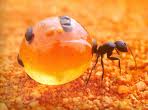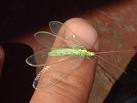 Are humans herbivores? Heck no, is the short answer. Even most herbivores aren’t exclusively herbivores. For example, deer are known to eat the nestlings of ground-nesting birds, if they are deficient in certain minerals that they need to grow antlers. Most primates eat insects as a supplement to plants, along with occasional meat. Human digestive systems and teeth are obviously designed for an omnivorous diet.
Are humans herbivores? Heck no, is the short answer. Even most herbivores aren’t exclusively herbivores. For example, deer are known to eat the nestlings of ground-nesting birds, if they are deficient in certain minerals that they need to grow antlers. Most primates eat insects as a supplement to plants, along with occasional meat. Human digestive systems and teeth are obviously designed for an omnivorous diet.
What started this line of thinking is that I just spent a little too much time responding to some ill-considered comments on a vegetarian message board. I was surfing for good recipes to feed my cheese-itarian fiancé. When I ran into ridiculous assertions that humans can’t digest meat and have herbivore teeth, I felt compelled to respond.
There are excellent arguments for a vegetarian lifestyle, but “humans are biologically herbivores” is simply not one of them. Basic palentology shows that we have what are called “bunodont teeth,” a type of tooth found in omnivorous animals. Herbivore mammals have much taller “hyposdont” teeth that can last longer when worn down by a gritty, plant-dominant diet. Primitive stone tools tell us that 2.5 million years ago early hominids were using stone implements to cut the flesh off the bones of large animals that they had either hunted or whose carcasses they had scavenged. Our digestive systems are clearly designed to digest animal proteins, beginning with pepsin in the stomach. The bottom line is that, historically and biologically speaking, we are omnivores.
What many of us in developed countries have “forgotten” is that an omnivorous diet can include insects. And it just might be a good idea for the environment.
Entomo-what?
Entomophagy–eating insects, arachnids, and myriapods–has been a successful dietary strategy for humans for tens of thousands of years (at least). Insect foods remain a popular in Central and South America, Africa, and Asia. There are an estimated 1,462 species of edible arthropods including crickets, cicadas, grasshoppers, ants, beetle grubs, caterpillars, scorpions, and tarantulas. Depending on the culture and customs, insects may be skewered, fried, smoked, baked, or eaten raw. In Australia, aboriginal peoples consider honeypot ants, whose grape-sized abdomens are filled with with sweet liquid, a delicacy.
OK, now you’ve really grossed me out!
Why bring up this topic that is likely to turn your stomach? If you’ll permit me a moment on my soapbox, I think a thoughtful semi-vegetarian and low-dairy diet is a moral imperative for everyone on the planet. We need to reverse the trend of large, specialized farms for meat or dairy, because they have a significant environmental impact. A study on the environmental impacts of dairy in the UK found that intensive dairy farms overwhelm the local ecosystems to damage habitat, reduce biodiversity, damage soil, increase use of fertilizers, medications and hormones, and pollute groundwater (skip to page 151 to read the conclusions for yourself). So ovo-lacto vegetarians are not off the hook. They are contributing to the problem.
But you just said we were omnivores. Don’t we all need protein?
Of course we all need protein (more specifically their building blocks, amino acids). Plant sources are unlikely to provide enough. Unless we can each return to keeping chickens and a cow on family farms, where we would live with the immediate environmental impacts of our dietary choices, we need to develop a cultural solution. One promising solution–if we can just get over the ick-factor–is minilivestock, or the cultivation of insects for food.
Some of the benefits:
- Insects generally contain more protein and less fat than traditional meats, according to the Entomological Society of America.
- They also have about 20 times higher food conversion efficiency than traditional meats, meaning they have a higher meat-to-feed ratio than beef, pork, lamb or chicken.
- Insects can be a good source of not only protein, but also vitamins, minerals, and fats. For example, crickets are high in calcium, and termites are rich in iron. Giant silkworm moth larvae provide copper, zinc, iron, thiamin, and riboflavin.
- One study noted that food collection of a crop pest grasshopper, Sphenarium purpurascens, may be a viable alternative to pesticide use in Mexico’s Puebla–Tlaxcala Valley. Collection of pest insects for food has a long history.
- We eat them anyway. Some estimates suggest that we eat from one to two pounds of insects each year, and without knowing it. We might as well make it a conscious part of caring for the environment.
Some interesting reads:
For Most People, Eating Bugs Is Only Natural
Entomophagy and space agriculture
Feeling brave? You can buy insect foods online.
Filed under: Ants, Bioinspiration / Biomimicry, Biology, Climate change, Coleoptera, Crickets (Gryllidae), Cultural entomology, Entomophagy, Grasshoppers, Lepidoptera, Orthoptera, Trends | 1 Comment »




















